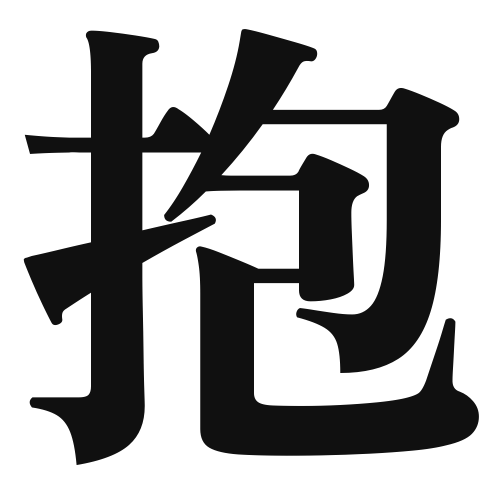1. Overview of Meaning
The kanji “抱” (pronounced “hō” or “daku”) means “to embrace” or “to hold.” It conveys the idea of physically holding something close, as well as metaphorically embracing concepts or feelings.
2. Formation and Radical
Formation of the Kanji: The kanji “抱” is a compound character (会意文字) that combines the elements of “手” (hand) and “包” (to wrap). This illustrates the action of using hands to wrap around or hold something.
Radical: The radical of “抱” is “手” (shǒu), which means “hand.” This radical is commonly found in kanji related to actions performed with the hands.
3. Examples of Usage
Common Words and Phrases: Some frequently used words that include “抱” are:
- 抱っこ (dakkō) – to hold a child in one’s arms
- 抱負 (hōfu) – ambition or aspiration
Example Sentences in Daily Conversation:
- 赤ちゃんを抱っこするのが好きです。 (Akachan o dakkō suru no ga suki desu.) – I like to hold babies.
- 彼の抱負は世界を旅することです。 (Kare no hōfu wa sekai o tabi suru koto desu.) – His ambition is to travel the world.
4. Synonyms and Antonyms
Similar Kanji: A similar kanji is “持” (mochi), which means “to hold” or “to possess.” While both kanji involve holding, “抱” emphasizes the act of embracing or wrapping around something, whereas “持” focuses more on possession.
Antonyms: An antonym of “抱” could be “離” (ri), which means “to separate” or “to part.” This represents the opposite action of holding or embracing.
5. Cultural and Historical Background
Relation to Japanese Culture: The concept of “抱” is significant in Japanese culture, often associated with warmth, affection, and care, especially in familial relationships.
Proverbs and Idioms: One common expression is “抱きしめる” (dakishimeru), which means “to hug tightly.” This phrase is often used to express deep emotional connections between people.
